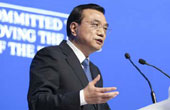New genetic markers for breast cancer identified
(Xinhua) Updated: 2015-03-10 11:11
 |
|
People stand around "Umbrellas", the sculpture by Giorgos Zogolopoulos, as it is illuminated in pink light to mark the Breast Cancer Awareness Month in Thessaloniki in northern Greece, October 21, 2014. [Photo/Agencies] |
MELBOURNE - Scientists from across the world, including Australia, have identified 15 previously unknown genetic "hot-spots" that boost a woman's breast cancer risk.
University of Melbourne Professor Melissa Southey told News Corp on Tuesday that the researchers now have identified 94 genetic markers that are linked to an increase in the susceptibility in the most cancers for females.
"Over the past 10 years, we have been progressively identifying common genetic variants that are associated with difference in risk," Southey said.
The latest research, published in Nature Genetics on Monday, encompassed genetic data from 120,000 women, including Australians, that was analyzed by Breast Cancer Association Consortium, an international group investigating hereditary breast cancer.
Researchers hope that the results will help develop better-targeted screening programs by identifying those with a higher or lower breast cancer risk.
Unlike previous discoveries, including the BRCA1 and BRCA2 genetic mutations which increase the lifetime risk of breast cancer by 55 percent, having one of the genetic variations identified in the latest research will only pose a small increase in risk.
However, some people will have many of these variations, multiplying their risk.
"These genetic variants are different because they are quite common, so three or four women out of 10 have them. It's just when women have a large number of these markers together that the risk really increases," Southey said.
"In Australia at the moment, everyone is treated the same - in that everyone over the age of 50 has regular mammograms - but everyone is not at the same risk," she said.
"We are trying to find ways of identifying those at the highest risk so they can have more appropriate screening."
Researchers said the next bit of the puzzle was studying how the genetic variations increase a person's risk to breast cancer.






